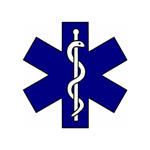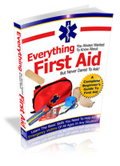Welcome to fractures Guide
Mid Ocean Ridge Perpendicular Fractures Article
 To bookmark this article for further reading, click here.
To bookmark this article for further reading, click here.
Wrist Fractures-The Most Common Fractures
Many people today still don't realize that fractures and broken bones are the same thing.
Another thing many of us don't realize is that wrist fractures are the most common fractures or broken bones in patients under the age of 65. Most wrist fractures are actually fractures of the radius, which is one of two bones in the forearm.
Although, there are many bones in the wrist that can be broken, wrist fractures most often are the bones where the forearm ends and the wrist begins.
Wrist fractures are usually fairly easy to diagnose. Some of the symptoms of wrist fractures are swelling, pain in the wrist and deformity of the wrist.
If a patient sees a doctor with any or all of these symptoms, the doctor will usually be able to diagnose this without an X-ray, although an X-ray may be ordered anyways just to be on the safe side.
In fact, if a patient goes to the hospital emergency room with these type of symptoms, an X-ray is usually the first thing the doctor will order. Even though, they may feel relatively certain there is a wrist fracture, an X-ray will help them determine the location of the fracture as well as how stable the bones are inside the wrist, which will help them decide on the best treatment.
Treatment for wrist fractures is usually a cast. The wrist is probably the one part of the body that responds the best to a cast. It some of the bones in the wrist are out of position; the doctor may be able to reset them back in place with a local anesthesia.
There are certain cases where a cast will not be sufficient for wrist fractures. Each case must be handled differently based on certain factors. In more severe breaks, the patient must see an orthopedist for treatment.
Some of the factors involved in determining proper treatment for wrist fractures are:
• The age and lifestyle of the patient- If the patient is young and needs the active use of the wrist, the doctor will try to restore the wrist to its normal condition.
• Bone quality- If a patient is elderly or suffers from weak bones such as with osteoporosis, the use of bones or plates is not recommended because the treatment may not be successful. In cases such as this, they may just recommend a cast.
• Location of the fracture- Since the bone can reheal over time better than cartilage, surgery may often be recommended for cartilage damage in wrist fractures.
• Displacement of the fracture-If the bones are badly damaged and out of place, surgery is usually recommended to position the bones in place.


